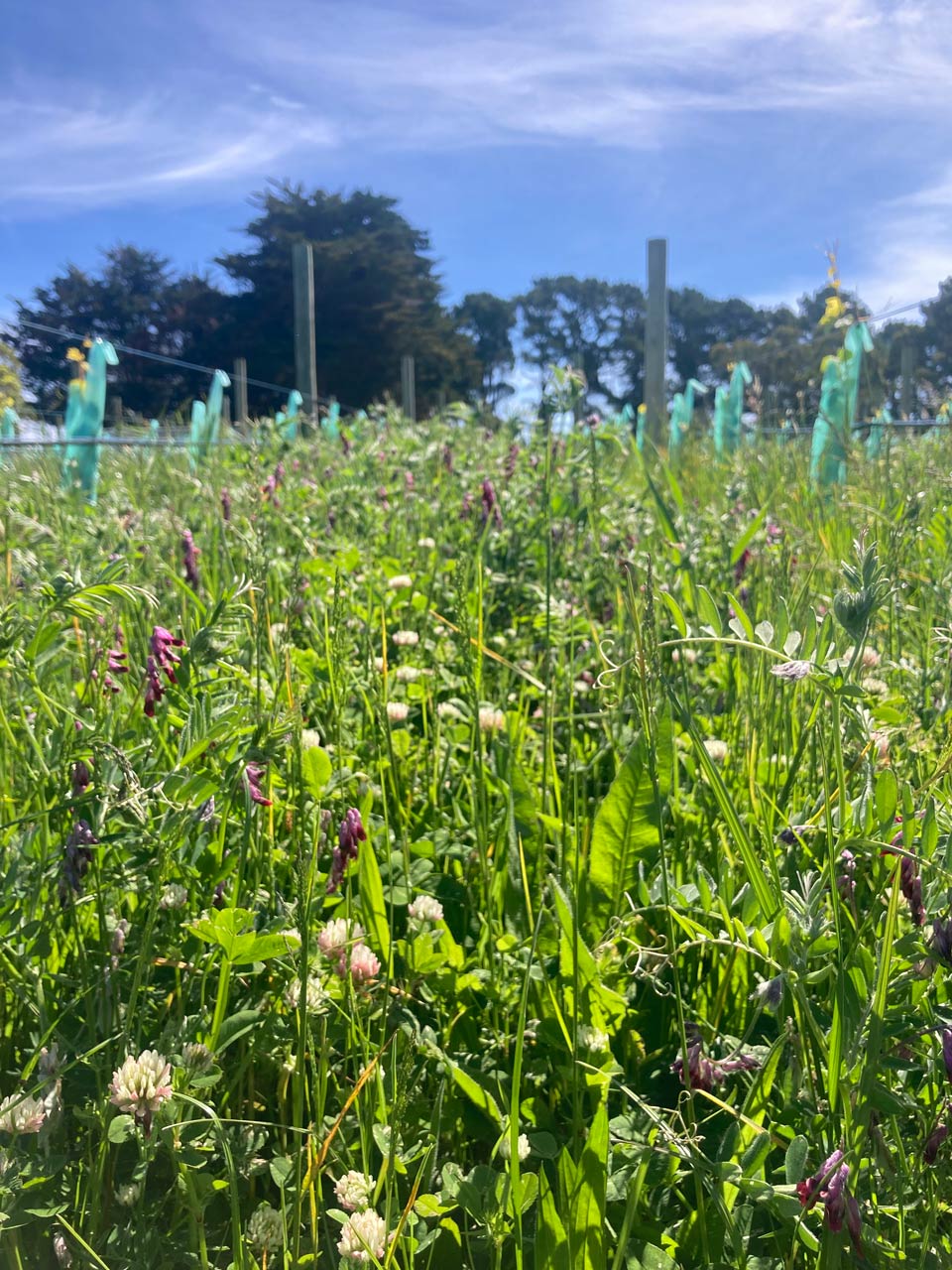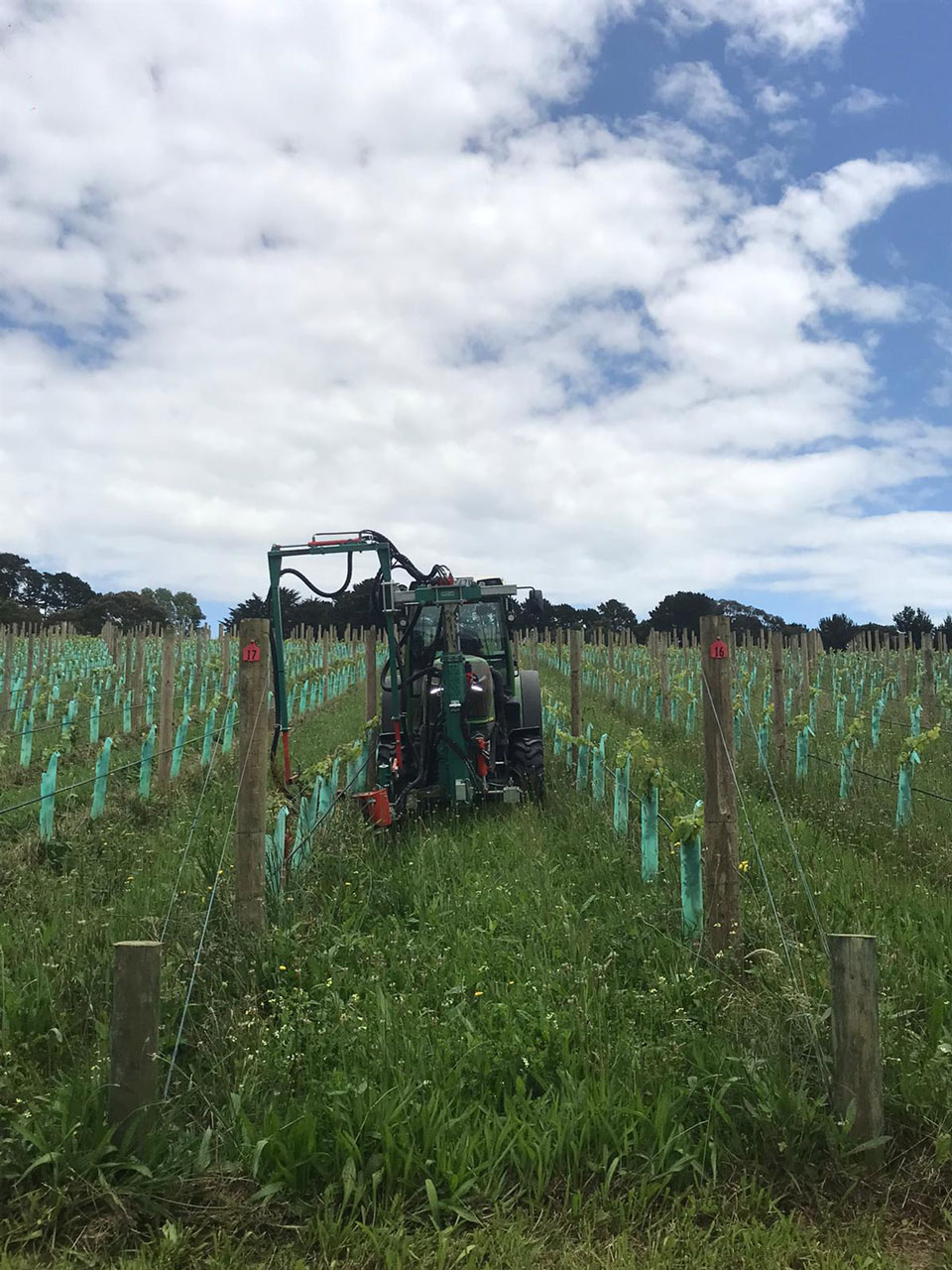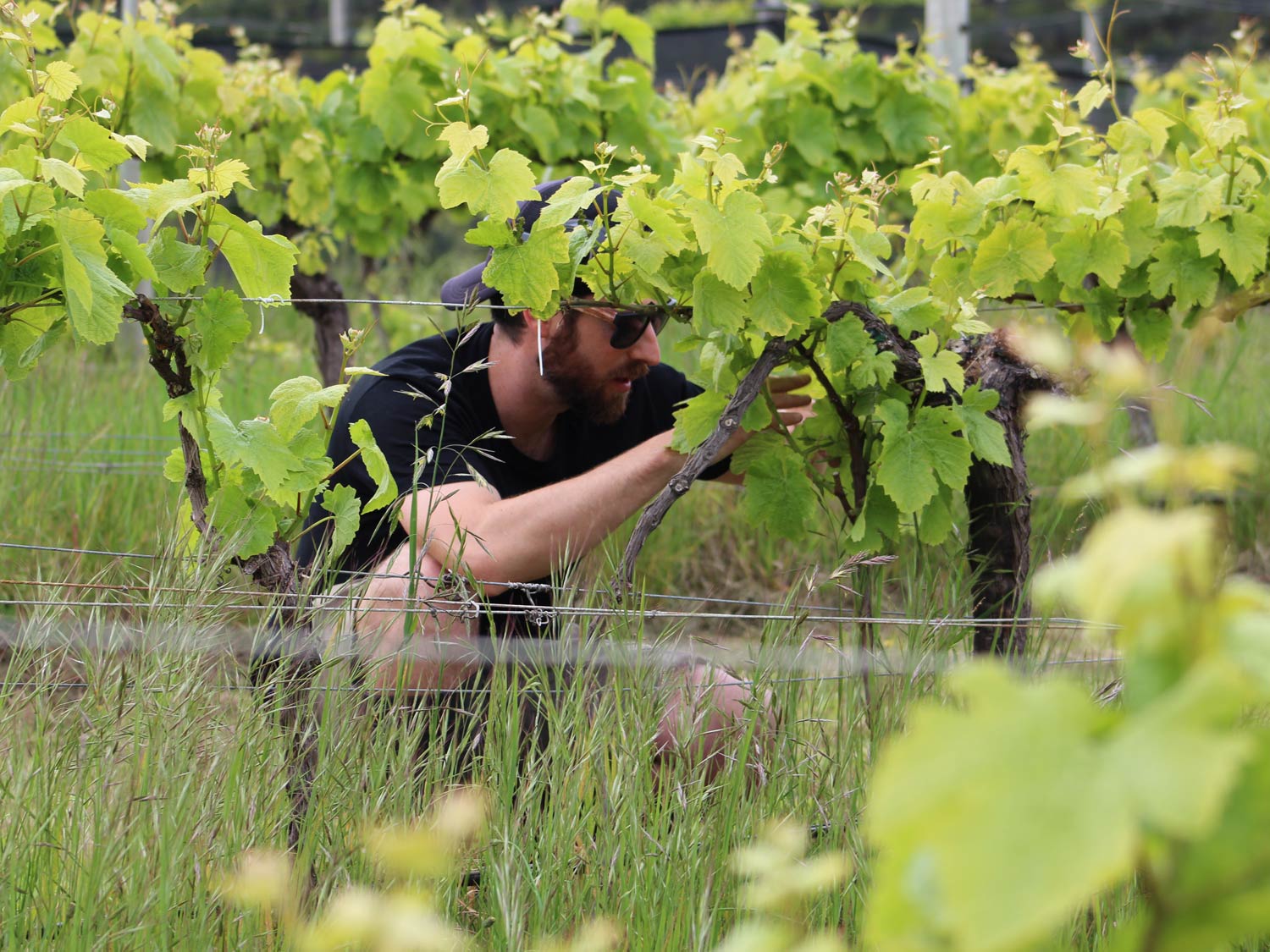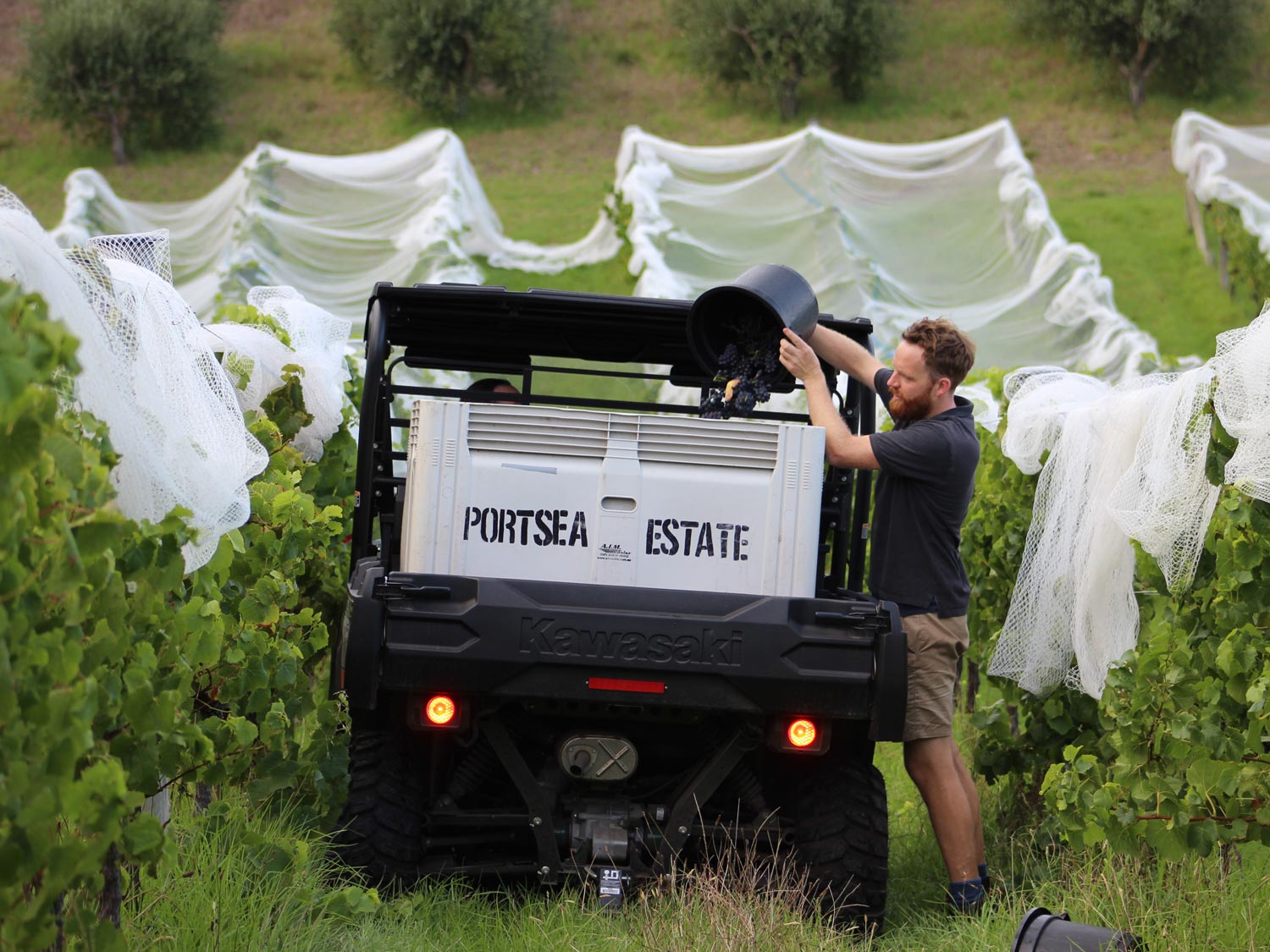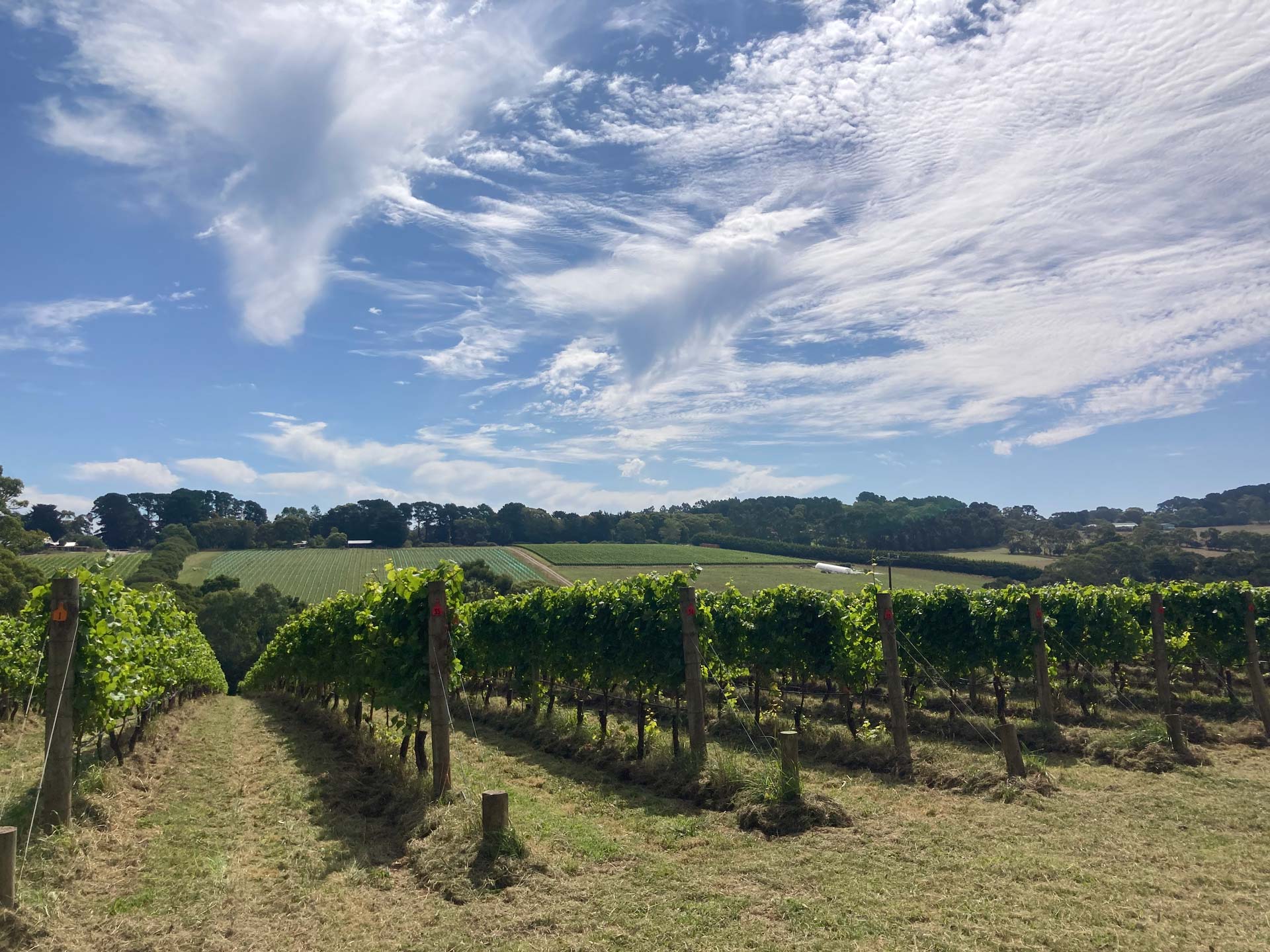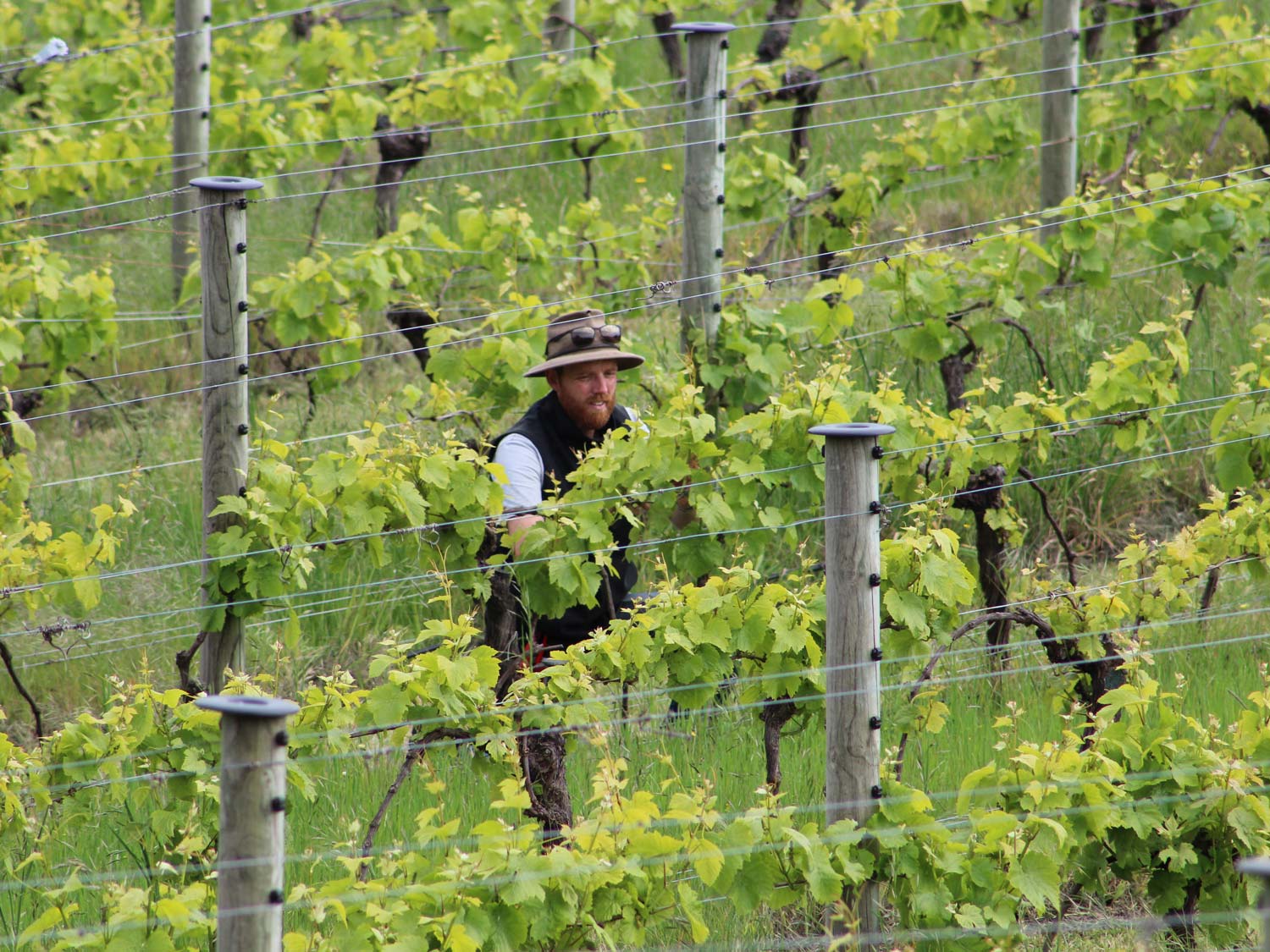Portsea Estate – Main Ridge Vineyard was first planted in 1997 and was recently acquired by Portsea Estate in 2021. Spearheaded by a passionate team including Matt Lugg, Sean Jones, Travis De Winton, Maddy Callahan, and Will Ross, this 5.47-hectare vineyard with red volcanic basalt (Ferrosol) soils at 174 metres elevation. It resides in the Mornington Peninsula’s sub-region of Main Ridge, which is surrounded on three sides by the waters of Port Phillip Bay, Western Port Bay and Bass Straight. The ‘Portsea Estate – Main Ridge’ site, making varietal bottlings of premium chardonnay and pinot noir, is bisected by Manton’s Creek forming a valley with east and west facing slopes, and is managed with regenerative agriculture since the new stewardship.
The Main Ridge vineyard is the second and most recent site to come under the Portsea Estate banner. Lugg describes the area: “The Mornington Peninsula is a unique region, being surrounded by water. One thing we find very exciting about the region is the different pockets that bring different meso and microclimates, leading to significantly different wines. Amongst single vineyards or properties, it’s not uncommon to have changes in soil, but we also find a lot of different aspects and temperature differences too”, he says. “Even between the two family-owned sites we manage, our Main Ridge Vineyard averages 1000mm a year and our Portsea Vineyard only 550mm despite the 25km distance. We often call our Main Ridge Vineyard ‘Billimari’ internally, meaning ‘plenty of water’ in Wiradjuri. Regrettably, the region also has consistent wind presence which has a big impact on the region’s yields, especially at flowering.”
“The Main Ridge vineyard was actually selected as a site that should be future proofed with increasing temperatures and less water supply. We have exceptional rainfall and it is a lot cooler by virtue of its elevation. It also has incredibly rich soil with great water retention. Our rows run east-west: we feel this is good as it means we are protected from the harsh western sun, but can leaf pluck the northern side if required. We dry grow established plantings and hope that we can subsequently grow resilient, hardy and balanced vines.”
The vineyard is located in Main Ridge, well known for its red Ferrosol soil. They have a relatively high altitude (for the region) of 174 metres, so combined with 1000mm of rain and incredibly fertile soil, the vines are well nourished and they only irrigate to establish the vines.
“We are lucky with our site to be in a valley separated by the beautiful Manton’s Creek – we have seven acres that face east and seven acres that face west.” On the east facing slope, Lugg and the team have planted various clones of pinot noir and chardonnay. “Whilst we wait for the seven east acres planted in November 2022 to fruit, we are honing in on what our older plantings have to offer.”
“We are extremely lucky to have found a very good site. A huge stylistic ambition with these wines is to pick on brightness – we don’t like clumsy wines and feel that wines built on energy, freshness and natural acidity work best for the site (and for the varieties. From our first two vintages here, the pinot noir wine floats on natural acidity and displays really savoury characters, such as fennel seed, graphite and ironstone, with primary fruit an afterthought. It also has surprisingly powerful tannins for such a delicate wine. Our chardonnays are all about purity too, but what is especially outstanding about them is the brilliant natural acidity”
One significant point of difference is the planting density with most of the plantings at 6,060 vines per hectare. “This is uncommon for the region,” says Lugg, “with a lot of established vineyards being planted around 2,000 vines per hectare.”
Another point of difference is the focus on regenerative agriculture. “We’re really passionate about it. We have a flock of 50 sheep come in over winter and have them selectively graze our vineyards. We have what we call a ‘duck palace’ nearing the end of its construction, which will be a permanent home for Muscovy ducks to help manage snails throughout the growing season. We love deep diving on soil health and believe in maintaining groundcover. We purchased a ‘Clemens Multicleaner’ which looks after our undervine, and has removed the necessity to herbicide and whipper snip. We don’t cultivate, and promote multi species diversity in groundcover. We have also run lots of cover crops trials and recently held a regional seminar on the topic and feel really happy with where our groundcover is at. Insect populations seem to be very happy too!”
It’s crucial to navigate the fine line between rigorous environmental stewardship and practical viticultural management. Matt Lugg’s candid reflections shed light on this balance, emphasizing a holistic approach to vineyard health. He articulates, “We like regenerative agriculture because we believe soil health is paramount and of utmost importance to viticulture, but find that organics or biodynamics doesn’t give us the flexibility to grow disease free vines and fruit at such a wet vineyard in such a humid region. We always keep the triple bottom line at the forefront of our business – people, planet and profit, and feel that regenerative agriculture fits this method best.”
Lugg further elaborates on the nuanced decision-making process that eschews organic certification in favor of a more adaptable regenerative strategy. He explains, “Despite adhering in most years, the reason we won’t aim for organic certification is how intensive the tractor work has to be in wet years like 2022 and 2023. We hope to spray every 7-10 days, but with organics, that’d likely be double in a wet year. In this situation, taking into account compaction, diesel use, impact on beneficials and build up of copper and sulfur, not to mention the fiscal ramifications of time spent on a tractor and chemicals, it might ironically have a more harmful environmental impact than beneficial, as compared to selectively using some non-organic approved chemicals only when required.”
In embracing regenerative agriculture, Portsea Estate – Main Ridge Vineyard is not only growing premium varietal wines, but also championing a future with environmental responsibility. “I was told by a mentor very early on in my wine journey that special vineyards just feel good; they feel right to be in. Our Main Ridge Vineyard feels right. I truly believe it has the capacity to be one of the region’s best vineyards. It is not just beautiful, but abundant too. The wines are pure and lively, and are not replicable anywhere else. It has a diversity of soil, abundance of life (above and below) and flowing water. We can’t wait to see where we’re at next year, or in five years.”

